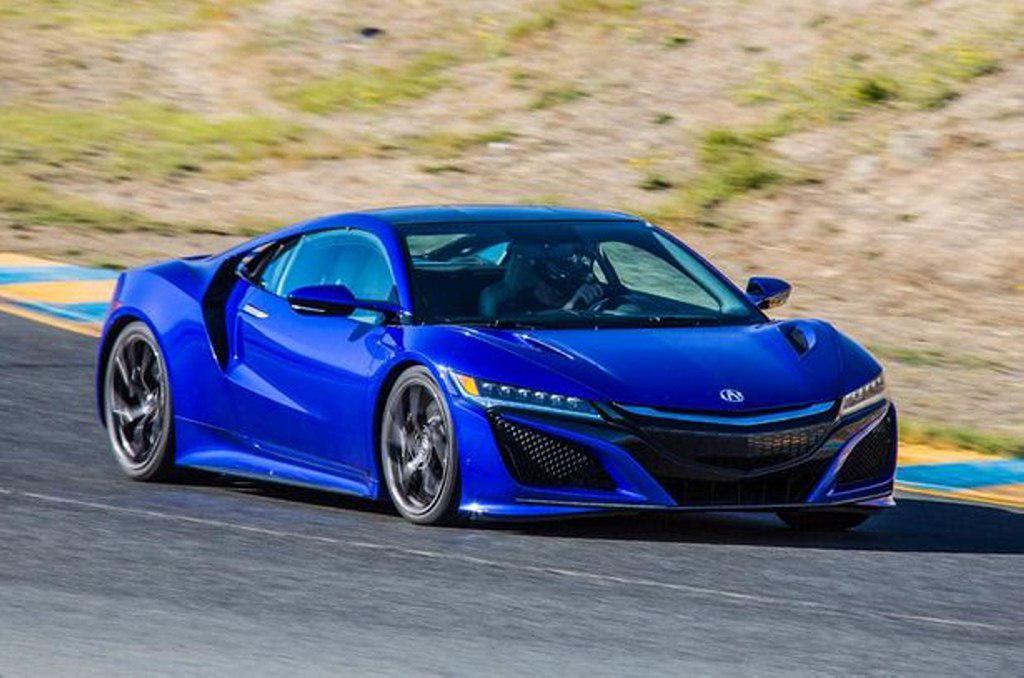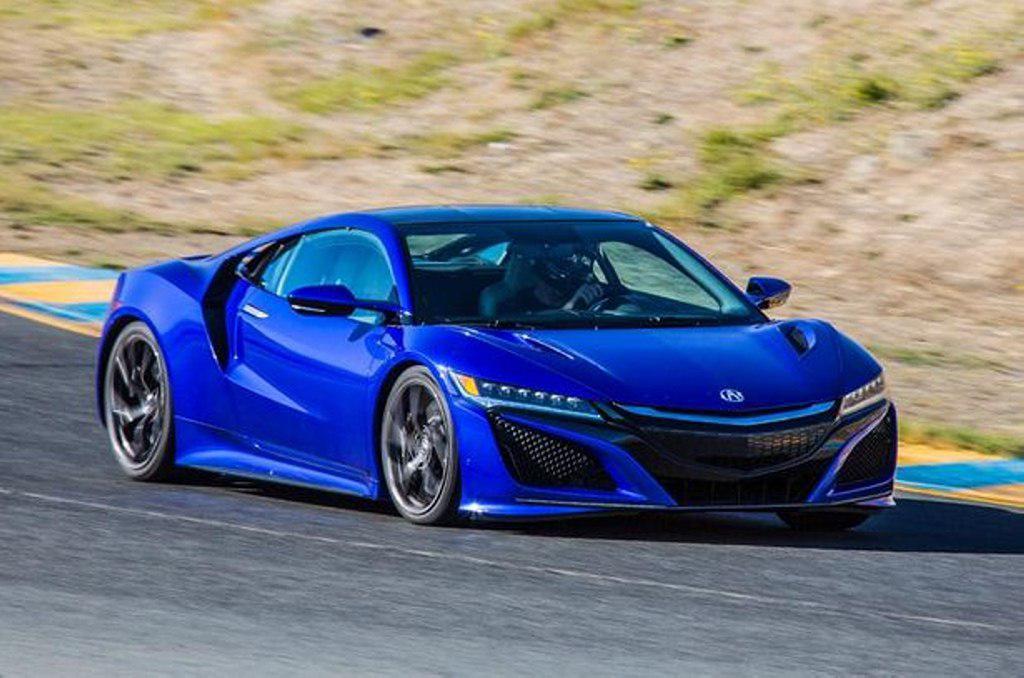
Drifting (motorsport)
Drifting is a driving technology where the driver intentionally oversteers, with loss of traction in the rear wheels or all tires, while maintaining control and driving the car through the entirety of a corner. Car drifting is caused when the rear slip angle is greater than the front slip angle, to such an extent that often the front wheels are pointing in the opposite direction to the turn (e.g. car is turning left, wheels are pointed right or vice versa, also known as opposite lock or counter-steering).
As a motoring discipline, drifting competitions were very first popularized in 1970s Japan, and today are held worldwide and are judged according to the speed, angle, showmanship and line taken through a corner or set of corners. [1] The desired line is usually dictated by the judge or judges, who describe their desired line as well as highlight areas of importance, such as clipping zones, clipping points and touch and go areas.
Contents
Origin Edit
Japan was one of the birthplaces of drifting as a sport. It was most popular in the All Japan Touring Car Championship races. The famous motorcyclist turned driver, Kunimitsu Takahashi, was the foremost creator of drifting technics in the 1970s. This earned him several championships and a legion of fans who loved the spectacle of smoking tires. The bias ply racing tires of the 1960s–1980s lent themselves to driving styles with a high slip angle. As professional racers in Japan drove this way, so did the street racers.
Keiichi Tsuchiya, known as the “Drift King” ( ドリフトキング , Dorifutokingu) , became particularly interested by Takahashi’s drift mechanisms. Tsuchiya began practising his drifting abilities on the mountain roads of Japan, and quickly gained a reputation amongst the racing crowd. In 1987, several popular car magazines and tuning garages agreed to produce a movie of Tsuchiya’s drifting abilities. The movie, known as Pluspy, [Two] became a hit and inspired many of the professional drifting drivers on the circuits today. In 1988, alongside Option magazine founder and chief editor Daijiro Inada, he helped to organize one of the very first events specifically for drifting called the D1 Grand Prix. He also drifted every turn in Tsukuba Circuit in Japan.
Popularity Edit
One of the earliest recorded drift events outside Japan was in 1996, held at Willow Springs Raceway in Willow Springs, California, hosted by the Japanese drifting magazine and organization Option. Daijiro Inada (founder of the Japanese D1 Grand Prix), the NHRA Funny Car haul racer Kenji Okazaki, and Keiichi Tsuchiya gave demonstrations in a Nissan 180SX that the magazine had brought over from Japan. Rhys Millen and Bryan Norris being two of the entrants. [Three] Drifting has then since exploded into a form of motorsport in North America, Australia, Asia and Europe.
Drifting has evolved into a competitive sport where drivers contest (almost exclusively in rear-wheel-drive cars) to earn points from judges based on various factors. At the top levels of competition, the D1 Grand Prix in Japan pioneered the sport. Others such as IDC (Irish Drift Championship) in Ireland, Formula D in the United States, World Drift GP formerly Drift Allstars, King of Europe and the British Drift Championship in Europe, WDS in China, RDS in Russia, Formula Drift Asia in the Malaysia/Singapore/Thailand/Indonesia, NZ Drift Series in Fresh Zealand, Australian Drifting Grand Prix and Greek Drift Championship (Drift Wars) have come along to further expand it into a legitimate motor sport worldwide. The drivers within these series were are able to keep their cars sliding for extended periods of time, often linking several turns.
Drifting competitions are judged based on line, angle, speed, style and showcase factor. Line involves taking the correct line, which is usually announced beforehand by judges. The showcase factor is based on many things, such as the amount of smoke, how close the car is to the wall or designated clipping point, and the crowd’s reaction. [Four] Angle is the angle of a car and more importantly the turned wheels in a drift, speed is the speed coming in a turn, the speed through a turn, and the speed exiting the turn; quicker is better. Style is scored on a combination of a rate-to-angle during the initiation, how fluid the car looks through the course, and how committed the driver is through the course. The rate-to-angle is how quickly during initiation or Furidashi (振り出し:commencing point) and transitions or Furikaeshi (振替し:transfer) a car gets to its sliding angle. Fluidity is how slickly a driver maneuvers their car around the course, taking into account the amount of correction that a driver applies through the turn(s), and the smoothness with which the car transitions from one corner to the next. Commitment is about how much throttle the driver applies, and the confidence and dedication the driver shows when approaching track edges and barriers. That is the quicker the driver is able to come to angle, the more speed and angle they can carry through the course, the fewer corrections they apply through the course and the closer they drive to the track edges or barriers, the higher the style score.
The judging takes place on just a petite part of the circuit, a few linking corners that provide good viewing, and opportunities for drifting. The rest of the circuit is irrelevant, except as it pertains to controlling the temperature of the tires and setting the car up for the very first judged corner. In the tandem passes, the lead driver (in the lead car, Senko) often feints their entry to the very first corner to upset the pursue driver (in the pursue car, Atooi), however in some European series, this practice is frowned upon by judges and considered foul play, resulting in deduction of points.
There are typically two sessions – a qualifying/practice session, and a final session. In the qualifying sessions, referred as Tansō (単走:solo run), drifters get individual passes in front of judges (who may or may not be the final judges) to attempt to make the final 16. This is often on the day preceding the final.
The finals are tandem passes, referred as Tsuisō (追走:pursuing race). Drivers are paired off, and each fever comprises two passes, with each driver taking a turn to lead. The best of the eight heats go to the next four, to the next two, to the final. The passes are judged as explained above, however there are some provisos such as:
- Overtaking the lead car under drift conditions is OK if the pursuing car doesn’t interrupt the lead car’s drift.
- Overtaking the lead car under grip conditions automatically forfeits that pass.
- Spinning forfeits that pass, unless the other driver also spins.
- Level of smoke from the tires.
- Enhancing the lead under drift conditions helps to win that pass.
- Maintaining a close gap while pursuing under drift conditions helps to win that pass.
Points are awarded for each pass, and usually one driver prevails. Sometimes the judges cannot agree, or cannot determine, or a crowd vocally disagrees with the judge’s decision. [Five] In such cases more passes may be run until a winner is produced. Sometimes mechanical failure determines the battle’s outcome, either during or preceding a fever. If a car cannot come in a tandem battle, the remaining entrant (who automatically advances) will give a solo demonstration pass. In the event of evidently close or tied runs, crowds often demonstrate their desire for another run with chants of ‘one more time’. [6]
There is some regional variation. For example in Australia, the pursue car is judged on how accurately it emulates the drift of the lead car, as opposed to being judged on its own merit – this is only taken into consideration by the judges if the lead car is on the suitable racing line. [ citation needed ] Other variations of the tansou/tsuiso and the tansou only method is the multi-car group judging, seen in the Drift Tengoku movies where the four car team is judged in groups. [7]
The D1JP drift series has been prototyping and fine-tuning an electronic judging system based on custom-built sensors that record and transmit car data to a computer that judges the run. This system is also being tested in some European series. It is designed to eliminate subjectivity and/or predisposition of judges. Usually the track for such a system is violated up into several sections (usually three) and the system automatically generates scores based on speed, angle and fluidity of the driver in each section, combining the scores for the final score. In certain situations judges can switch or overrule a score, which happens, tho’ uncommonly.
Drift cars are usually light-to-moderate weight rear-wheel-drive coupes and sedans, suggesting a large range of power levels. There have also been all-wheel drive cars (AWD) that have been converted to rear-wheel drive such as Subaru WRX, Toyota Avensis as Scion tC, Mitsubishi EVO and Nissan GT-R. Early on AWD cars without conversion were permitted in some drifting competitions, usually the rules permitted only a certain percentage of power to be sent to the front wheels, but are banned in most (if not all) drifting competitions today.
Despite the export of Japanese Domestic Market (JDM) vehicles to continents outside Japan, [8] drifters in other countries choose to use local examples as drift cars.
A high volume of JDM imports were brought to countries such as Australia and Fresh Zealand, however it is not unusual to see Australian/Fresh Zealand domestic vehicles such as the Holden Commodore or Ford Falcon used in drifting competitions. [9]
The American market spotted a relatively high volume of JDM cars being imported over the last decade, despite Japanese domestic vehicles being right-hand-drive only. [Ten] Locally-sold imports such as the Lexus SC and Nissan 240SX feature powerfully in American drifting, however they are usually modified with JDM engines to mirror their Japanese domestic equivalents (usually with a Toyota 1JZ-GTE/2JZ-GTE or Nissan CA18DET/SR20DET/RB26DETT respectively). [11]
In the UK there are a high level of Japanese imports used within the drifting scene, due in part to the UK sharing a right-hand drive layout with Japan. However, these cars often cost more than UK-market cars, partly due to import costs. There are slew of UK and European models used as drift cars as well, older BMW’s are particularly prominent due to cost and availability, with Volvo three hundred series and Ford Sierras also proving popular. [12] [13]
As an example, the top fifteen cars in the two thousand three D1GP, [14] top ten in the two thousand four D1GP, [15] and top ten in the two thousand five D1GP [16] were: [ clarification needed ]
In the Formula Drift Professional series, cars range from very tuned Japanese automobiles reflecting the original styles of drifting, to all fresh age makes and models. Due to no power limit limitations in the series, it is not uncommon for competitors to use a diversity of different powerplants. Popular variations of Chevrolet “LS” engines are often being seen bolted down to Japanese frames. [17]

